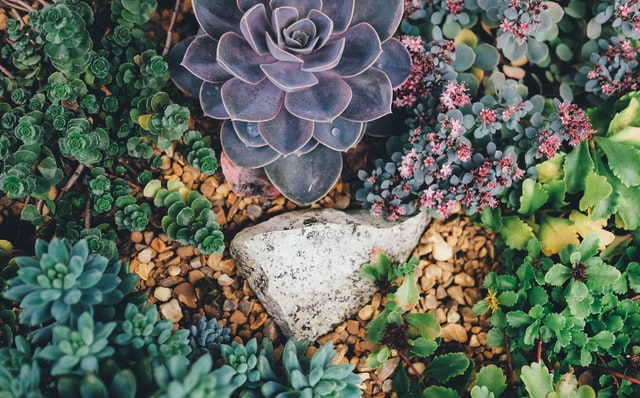Low maintenance as it may be, a rock garden can be a daunting home project to pursue. You don’t need to stick with turf forever and always, though. If you’ve always wanted to design and implement a rock garden for your home, here’s what you need to know about installing and maintaining one.

Why would you want a rock garden?
While it may not be as plant-filled as a lush meadow garden, a rock garden can come with many benefits. While you need to make an initial investment of time and money, this type of garden can be beautiful and low-maintenance in the long run. No matter what weather you face, whether it’s dry and hot or cold and rainy, rocks will more or less look the same at the end of the day. And in contrast with a flower garden bed or a green turf, you won’t need to water your plants all the time. Most people will go with water-smart succulents or other easy-care native plants, as thirsty plants are not usually compatible with a rock garden.
General costs
Since rocks are so heavy to ship, it’s cheapest to source them locally. You can usually find them at your local garden centers, but it’s often more cost-effective to get them from a rockery. How much your rock garden costs will depend on how much space you plan to cover with rocks and what kind of landscaping rocks you want to use. Landscaping rock projects cost anywhere between $250 to $1,500 on average. Landscaping rocks themselves can cost anywhere between $45 to $350 per ton, and this estimate may not include delivery, either. Consider potentially free sources, such as construction sites or farmers who plow up rocks — always, of course, ask before taking anything! If you don’t put down the rocks yourself, remember to factor in labor costs when calculating a budget estimate.

How to make a rock garden
How difficult your rock garden will be to install depends on the scope of your project. Suffice to say, building a rock garden will require some hard work, whether you do it yourself or hire contractors to do it for you. Think about what kind of garden you want to create, whether it’s a minimalist zen garden, succulent and cactus garden, or alpine garden. This will determine how you arrange your rocks and what kind of soil you need.
Before even putting down your rocks, clear the ground of any growth. You especially want to pull grass up by the roots to avoid dealing with foliage poking out during the spring. After you have a smooth, grassless surface, you can layer down sand and landscaping fabric to prevent weeds from popping up beneath your rocks.
If you’re putting down rocks yourself, get reinforcements such as a back brace before even loading rocks into your wheelbarrow or dolly. Try not to carry too many rocks at once to avoid straining yourself. You can start with an outer border with thick, large stones, then pour smaller gravel chunks inside. It really depends on what layout you have in mind.
Choosing plants for your rock garden
Most plants in your rock garden will probably be small, except for shrubs and trees for some height. Many people will go for low-maintenance plants for rock gardens since pruning and weeding can be challenging with a gravel surface. Succulents and cacti are easy options since they require so little care, but it’s worth checking what kind of plants are native to your region, too. Hardy flower choices for rock gardens include sedums, lavenders, and geraniums, which help soften up a gravelly landscape.

Tips for upkeep
While a rock garden requires little maintenance, this doesn’t mean zero maintenance. Occasionally, comb through your rock garden with a rake or leaf blower to pick off debris — this will probably be your main chore during autumn when leaves are falling. You also want to check if the gravel looks even. Smooth out the rock distribution if you notice patchy areas or piles. Another issue is weed growth. Even with preventative layers placed down, you might still see grass poking out of the ground. Besides pulling up weeds, consider using a liquid herbicide to remove unwanted growth. And last but certainly not least, you also want to maintain your plants, too. Give your trees, succulents, and other plants fertilizer and water as needed.
A rock garden can be an intimidating gardening project, but it’s not impossible with a rock-solid plan — pun intended. Once you come up with the budget and design for your garden, all you need to do is put in the hard work to make your vision happen. After settling down your rocks and plants, enjoy your beautiful landscape with only the occasional bit of maintenance down the road.



